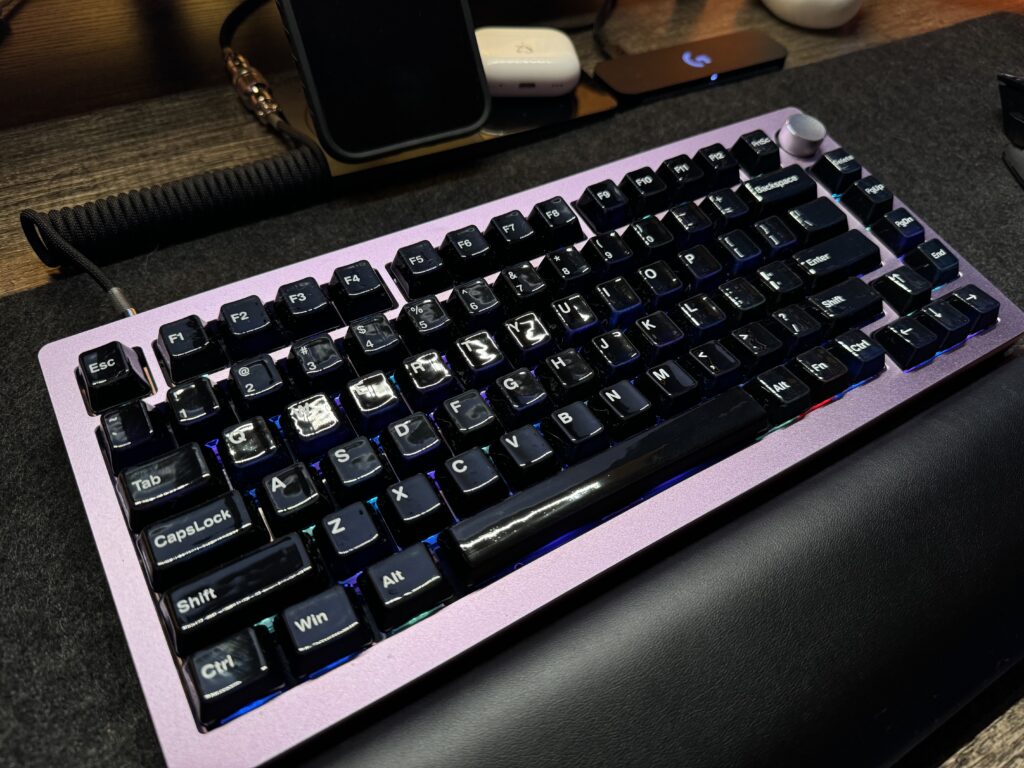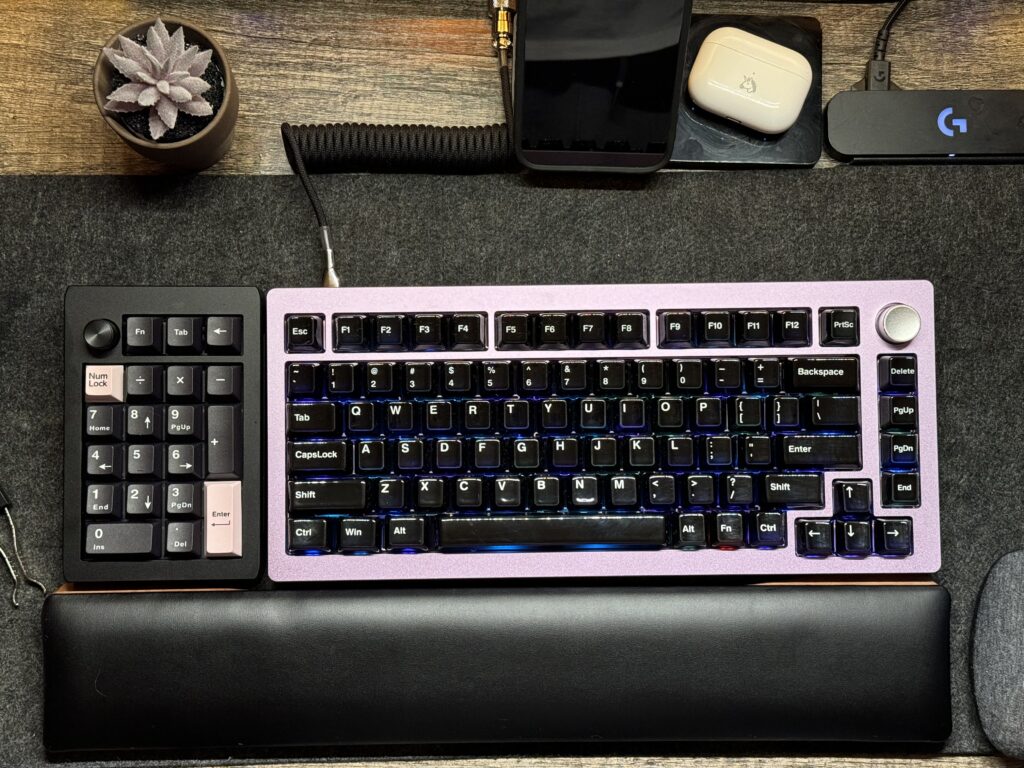Cerakey Ceramic Keycaps Review: Are They Worth the $129 Price Tag?

Introduction: In the vast world of mechanical keyboards, keycaps are more than just a superficial aesthetic upgrade—they can drastically affect your typing experience, sound profile, and even the longevity of your board. The Cerakey Ceramic Keycaps have been generating a lot of buzz lately, and for good reason. These aren’t your typical ABS or PBT keycaps. Made from ceramic, these keycaps promise to elevate your typing experience to a whole new level. But at $129, they come with a significant price tag. So, the big question is: are they worth it?
⌨️EK21-X Num Pad: https://amzn.to/4gjpVxY
Direct: https://epomaker.com/products/epomaker-ek21-x-via?sca_ref=6880048.SVRWBAC52t
⌨️Epomaker Tide75: https://amzn.to/4gtFQK8
Direct: https://epomaker.com/products/epomaker-tide75-qmk-via?variant=48165710659892&sca_ref=6880048.SVRWBAC52t
⌨️ Cerakey Ceramic Keycaps: https://www.cerakey.com/
I had the chance to test the Cerakey Ceramic Keycaps on the Epomaker Tide75, and what I discovered truly surprised me. Here’s an in-depth look at their performance, design, and whether they justify the premium price.
Design & Aesthetics: Sleek, but with a Catch
The Cerakey Ceramic Keycaps boast an undeniably sleek and unique design. Available in various colors like black, white, blue, and purple, they offer customization options for those looking to build a personalized and visually striking setup. However, I went with the black keycaps, and while they look stunning, they quickly revealed one of their major drawbacks: fingerprints. The ceramic material, combined with the glossy black finish, means that they are fingerprint magnets. If you’re someone who dislikes seeing smudges on your keyboard, you may want to opt for the white or other lighter colors.
Another aspect that might concern buyers is how reflective the black keycaps are under certain lighting conditions, especially if you use a light bar in your setup. This reflection can be distracting during extended use, but again, this issue is largely alleviated with the lighter-colored keycap options.
RGB Compatibility is another standout feature of these keycaps. Surprisingly, the ceramic keycaps allow RGB lighting to shine through better than most standard PBT or ABS keycaps. This results in a beautiful glow that enhances the overall aesthetic of the keyboard. If you enjoy vibrant RGB setups, this could be a major selling point.

Build Quality: Built to Last?
Ceramic is not the first material that comes to mind when we think of keycaps, but it turns out to be a durable choice. These keycaps feel incredibly solid and well-built, and they should last much longer than traditional plastic keycaps. Ceramic is highly resistant to wear and tear, so you won’t see the same level of fading or shine that often occurs with heavy usage of ABS keycaps.
However, with durability comes weight, and that’s where things get a bit tricky. Each Cerakey keycap weighs around 3g, compared to the typical 1g of a regular keycap. This added weight has a noticeable effect on typing and, potentially, on gaming performance, but more on that later.
Typing Experience: A New Level of Satisfaction
Typing on ceramic keycaps is unlike anything I’ve experienced before. The Cerakey Ceramic Keycaps offer a sound and feel that I can only describe as creamy. The smoothness of each keystroke is incredibly satisfying, and the sound profile is rich and consistent.
In fact, with these keycaps, I managed to hit my highest typing speed ever. The heavier weight of the keycaps somehow made my typing more fluid and precise. Each keystroke felt intentional, and I found myself making fewer typing errors. The tactile feedback combined with the sound made for one of the best typing experiences I’ve ever had.
It’s worth noting, though, that this heavier weight also slows down the key’s return, which could affect performance in certain use cases. For instance, professional gamers might not love this, as the keys may not spring back as quickly as lighter keycaps. But for typists, developers, or writers, this added weight could actually enhance the experience.

The Sound: Creamy, Satisfying, and Consistent
Now let’s talk about the sound profile. If you’re a fan of the “thock” sound often associated with premium keycaps and switches, the Cerakey Ceramic Keycaps will blow you away. They produce one of the most satisfying, stock-like sounds I’ve ever encountered. It’s a deep, rich sound that makes typing not just a necessity but an actual pleasure.
That said, I did notice one odd quirk: the spacebar didn’t have the same consistency as the other keys. The sound of the spacebar felt a bit off, almost as if it were rubbing against something. This was surprising because, in my previous experience with ceramic keycaps on the Epomaker Aura F75, the spacebar was a standout feature. Hopefully, this is just a minor flaw with the particular keyboard I was using.
Performance in Gaming: Questionable(needs more testing)
While the Cerakey Ceramic Keycaps excel in typing, the gaming experience leaves a bit to be desired. The heavier keycaps slow down the key’s return, which may not be ideal for fast-paced gaming scenarios. Gamers who require rapid keystrokes and minimal actuation delay may find these keycaps to be a hindrance rather than an asset. However, for coding, writing, or general productivity, the ceramic keycaps really shine.

Price: Is $129 Justifiable?
Let’s address the elephant in the room: the price. At $129, these keycaps are not a budget-friendly option. For context, you can find a decent mechanical keyboard for around the same price. So, are they worth the cost?
If you’re looking for a premium typing experience, want something unique in both sound and feel, and don’t mind the extra weight, then yes—these keycaps are worth it. The sound profile, durability, and aesthetic appeal make them a worthwhile investment for keyboard enthusiasts. However, if you’re more budget-conscious or primarily looking for a set of keycaps for gaming, you might want to explore other options.
Pros and Cons
Pros:
- Amazing Sound Profile: Offers a rich, creamy sound that makes typing a joy.
- Durable Material: Ceramic keycaps are built to last, resisting the shine and wear common with plastic keycaps.
- Great RGB Compatibility: RGB shines beautifully through the keycaps, enhancing any setup.
- Improved Typing Speed: The weight and feel of the keycaps allowed me to reach my highest typing speeds.
- Multiple Color Options: Available in a variety of colors, including black, white, blue, and purple.
Cons:
- Fingerprints and Reflection: The black keycaps are prone to fingerprints and reflect light, which can be distracting.
- Price: At $129, they are expensive, especially compared to standard keycap sets.
- Heavy Weight: The added weight of the keycaps may not be suitable for fast-paced gaming.
- Spacebar Sound: The spacebar sound on the Tide75 was less consistent compared to other keys.
Final Verdict:
The Cerakey Ceramic Keycaps are an exciting innovation in the world of mechanical keyboards. While they aren’t perfect, their sound and typing experience set them apart from typical ABS or PBT keycaps. For typists, developers, and even casual gamers who prioritize typing comfort and sound, these keycaps offer something truly unique. However, if you’re heavily into gaming or are more concerned with practicality over aesthetics and sound, the $129 price tag may be hard to justify.

In conclusion, the Cerakey Ceramic Keycaps are a niche product that excels in specific areas, but with a few minor flaws. If you’re willing to invest in an unparalleled typing experience and can overlook the issues with fingerprints and weight, these keycaps are a fantastic choice.




